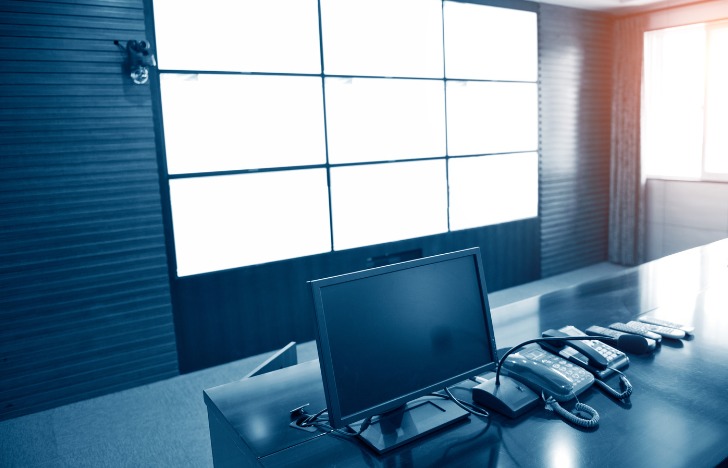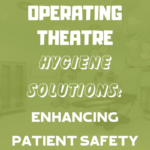
The management of the first hours of a crisis often determines the duration and success of problem solving. By reacting quickly, the company considerably improves its chances of a successful outcome. Moreover, by taking the initiative, it puts itself in a position of control.
It is therefore essential to have the right people in the right place at the right time. The right place is the crisis room prepared for this purpose. It should be close enough to normal operations to shorten set-up time, but also on the fringes of the company’s normal operations, in a safe place, away from the curious.
In this article, we explain how best to set up a situation room and look in more detail at the different audiovisual technologies that can be implemented in this space.
What is a crisis room?
A crisis room is a space dedicated to the management of critical situations and emergencies within a company or public organisation. It is a place where key people and information can be gathered to deal with a crisis situation, such as a major breakdown, a security problem, a computer attack, a natural disaster or any other unforeseen event that could jeopardise the company’s activity or the safety of goods and people.
The crisis room can take different forms, from a simple meeting room equipped with a telephone and a computer to a highly technological room equipped with video surveillance systems, interactive dashboards, secure connections with the field, crisis management software, etc.
The main objective of the crisis room is to allow quick and efficient communication between the crisis team members, decision makers and external stakeholders, such as the media, government authorities, customers or suppliers. It also provides a dedicated space for gathering and analysing information, making tactical or strategic decisions and implementing a coordinated action plan.
Crisis room / control room: what are the differences?
The control room and the crisis room are two spaces dedicated to the management of critical situations and emergencies, but they have different functions and characteristics.
- The control room is typically used to monitor and manage the operations of a company or organisation in a steady state. It allows operators to monitor data and information flows, detect anomalies and errors, and take preventive action to avoid interruptions or breakdowns.
- The crisis room is used to manage situations that are of an emergency nature and exceed the normal capacity of the control room. It allows the crisis team -decision-makers and specialists- to come together immediately, view and hear the same data, and then decide collectively.
- Despite these differences, there are similarities between the two spaces. Both rooms are generally equipped with advanced technology and allow for fast and efficient communication between team members. They are also equipped according to ergonomic standards, as both are used for long hours.
Functionally, the crisis room is situated between the collaboration room and the control room, since it borrows from the former all the communication and sharing tools and from the latter the supervision and analysis tools.
At Motilde, rather than opposing these two spaces, we prefer to consider the crisis room and the control / supervision room as complementary; we see the crisis room as a natural extension of the control room. Indeed, there are many sources in the control room that will be useful to view during the crisis. In addition, there will be close communication between the actors in both worlds. Finally, throughout the crisis, managers will decide to put under supervision a situation, a place or a process which is or was involved in the crisis: what better way than a control room to take over?
Designing the crisis room: opt for modularity!
We have just seen that the crisis room is a key place for managing emergency situations, collecting and centralising information, organising and coordinating the necessary logistics and facilitating decision-making. However, it is important to note that :
- By definition, one crisis is not like another (neither in its content nor in its volume), otherwise we are back to the concept of the operating room.
- Crises are rare. It is therefore wise to think about the use of the room outside of crises.
Modularity is therefore essential when designing a crisis room.
In this way, the crisis room can easily be transformed into a meeting room, conference room, training room, executive committee room or board room. With a modular crisis room, your organisation will be better prepared to 1. manage very different emergency situations. 2. optimise the room in normal times.
Furniture plays an important role in the modularity of a crisis room. Tables must be mobile and can be built in to facilitate the rapid transformation of the room. Technology must also be mobile, which means wireless solutions (Wi-Fi, wireless HDMI receiver/transmitter, etc.). Screens, whiteboards and audiovisual equipment must be flexible to adapt to these different uses.
Crisis room equipment
Audiovisual equipment
Audiovisual technologies are at the heart of the crisis room. They allow the necessary data to be viewed in real time and to communicate effectively. Here are some of the audiovisual equipment useful for a crisis room, the choice depending of course on the nature of the processes:
- Video wall

The video wall is composed of several screens juxtaposed to form a single large screen. The frames of the single screens form a grid called “Bezel” (= distance between the edges of two adjacent images).
It allows several sources of information to be displayed simultaneously, such as videos, images, dashboards, plans, business applications, etc. These sources must be planned at the outset so that those responsible for crisis management can have a global view of the situation in real time and coordinate their actions accordingly. These sources must be planned at the outset so that those responsible for crisis management can have a global view of the situation in real time and coordinate actions accordingly.
Displays should have a resolution appropriate to the content being displayed. Brightness and contrast should be adjustable to suit different levels of lighting in the room and to allow staff to “last” if the crisis is prolonged.
The video wall can also be controlled remotely via an intuitive interface to facilitate the management of the various contents displayed.
- Video conferencing systems
Videoconferencing allows for better coordination and responsiveness in crisis management. It is indeed important to be able to decode the non-verbal in a crisis situation, even more than in a normal situation. It may also be necessary to share the contents of the above-mentioned sources with remote stakeholders.
For a videoconferencing ecosystem to be effective, several criteria must be taken into account:
- The quality of the internet connection. Sufficient bandwidth is needed to allow smooth communication without interruptions or slowdowns.
- The videoconferencing equipment. The camera should have sufficient resolution and image quality to allow participants to see faces and expressions clearly. The sound should be clear and free of background noise. Microphones should be strategically placed to pick up sound from all participants.
- Compatibility between different equipment. Equipment of different brands and standards should be able to communicate with each other without problems. It is therefore important to choose compatible equipment and check compatibility before purchase.
- Ease of use. The user interface should be intuitive and easy to understand. Participants should be able to quickly access basic features such as screen sharing, note taking and session recording.
- Security. Videoconferencing ecosystems must offer advanced security features such as data encryption and user access management.
- Interactive screens
The interactive screens can be used to view any type of content that needs to be modified or annotated in real time: maps, plans, images, graphics, presentations, ….
This allows the crisis room team to collaborate interactively using the touch screen functions, such as drawing, note-taking, file sharing, or web browsing.
- Network and internet connection
Without a good network connection, all of the equipment described in this section is likely to be useless. It therefore seems sensible to prioritise the flow of the situation room at network level, for example by implementing a QoS (Quality of Service) at the building’s NAT/firewall.
In the room itself, it must be ensured that all members can connect individually to high-consumption applications (streaming, videoconferencing, etc.). Time to switch to Wifi 6?
- SCADA systems
SCADA (Supervisory Control And Data Acquisition) systems, consisting of sensors, actuators, controllers and supervisory software, are control and monitoring systems widely used in industries and critical infrastructures.
Sensors measure physical parameters such as temperature, pressure, flow, etc. Actuators are used to control equipment remotely. Controllers manage equipment and processes, while supervisory software allows real-time data visualisation and analysis.
- Monitoring of critical IT
This aspect of crisis management is sometimes neglected. However, the information needed comes mainly from digital tools. But are these tools under supervision? Are the network and the information system infrastructure fully operational? For the crisis room, but also for other key players in the organisation. Depending on the nature of the threat, it may therefore be useful to have a few very synthetic screens in the crisis room showing the rate of availability of the equipment and the network in place.
Crisis room furniture
- Tables: we have already stressed the need for a high degree of modularity and mobility in crisis room tables. This modularity does not exclude comfort, for example by selecting tops with soft edges.
- Chairs: Chairs should be comfortable and ergonomic to allow prolonged use without excessive fatigue. They should be height adjustable and have lumbar support to reduce back and shoulder strain. They should also be equipped with castors to allow the mobility described above.
- Cabinets and shelves: Secure storage cabinets (manual or electronic keys) are often useful in a sensitive area such as the crisis room where some electronic tools or even paper files should not be accessible to everyone.
Security systems
Safety equipment should be chosen according to the potential risks associated with emergency situations and the characteristics of the crisis room. Here are some things to consider:
- Doors and locks: Doors and locks in the crisis room should be designed to resist break-in attempts and ensure that only authorised persons have access.
- First aid kits: It is important to have well-stocked first aid kits in the incident room to provide immediate assistance in case of a medical emergency.
- Emergency power supply: An emergency power supply is a vital piece of equipment for a crisis room. In the event of a power failure, the emergency power system must be able to provide power to critical equipment such as communication systems, computers and monitors. Back-up batteries, generators, inverters and solar panels are possible solutions.
- Physical security system: Teams should feel safe inside the crisis room. Surveillance cameras, access control systems, motion sensors, smoke detectors and alarm systems can be installed. The choice of a suitable security system will depend on the use of the room and the level of protection required.
If you wish to create a crisis room, Motilde will assist you in its design and implementation thanks to its threefold competence as a technological integrator, a supervision specialist and a designer of specific furniture. We will offer you a global and tailor-made solution corresponding to your needs. Don’t wait any longer! Ask us for a demo😉
Do you want to implement or optimise a control room?
Download our free guide:








